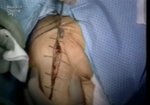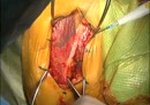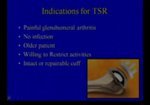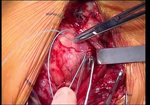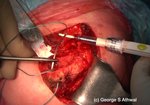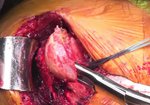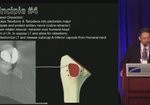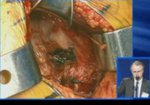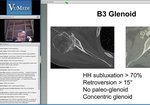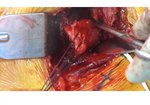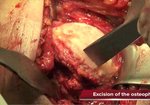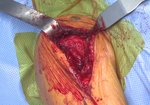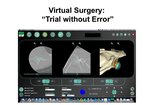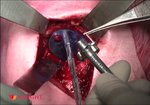Total Shoulder Arthroplasty (Technical Notes and Results)
1,256 views
August 12, 2015
Nowadays, total shoulder arthroplasty (RTSA) is the treatment of choice for most of the shoulder ...
read more ↘ osteoarthritis diagnosis when the rotator cuff is intact and functional. The purpose of this work is to show a detailed video-demonstration of the surgical technique at University of Florida for this complex and common pathology. As an adjunct, the video is accompanied with >2 years follow up results as well as our specific staged rehabilitation program.
METHODS:
The records of patients with the diagnosis shoulder OA who had received a TSA were reviewed. A minimum of 2 years' follow-up was required. Active shoulder elevation, external rotation, internal rotation; Constant, Shoulder Pain and Disability Index (SPADI) scores were obtained. Demographic data and complications rate were offered as well.
RESULTS:
We identified 117 total shoulder arthroplasties with a minimum of 2 years' follow-up. The mean follow-up was 2.79 years. The mean age was 67 years old. SPADI scores improved from 80 (preop) to 23 (postop). Constant score improved from 37 to 64. Active elevation and external rotation was significantly better. The complication rate was 16,24%, half of them because of rotator cuff failure.
CONCLUSIONS:
TSA in OA diagnosis has excelents results regarding pain relief, function, and ROM. Nowadays complications rate at 2-year follow-up can be improved using RTSA system when rotator cuff functionality is in doubt.
↖ read less
read more ↘ osteoarthritis diagnosis when the rotator cuff is intact and functional. The purpose of this work is to show a detailed video-demonstration of the surgical technique at University of Florida for this complex and common pathology. As an adjunct, the video is accompanied with >2 years follow up results as well as our specific staged rehabilitation program.
METHODS:
The records of patients with the diagnosis shoulder OA who had received a TSA were reviewed. A minimum of 2 years' follow-up was required. Active shoulder elevation, external rotation, internal rotation; Constant, Shoulder Pain and Disability Index (SPADI) scores were obtained. Demographic data and complications rate were offered as well.
RESULTS:
We identified 117 total shoulder arthroplasties with a minimum of 2 years' follow-up. The mean follow-up was 2.79 years. The mean age was 67 years old. SPADI scores improved from 80 (preop) to 23 (postop). Constant score improved from 37 to 64. Active elevation and external rotation was significantly better. The complication rate was 16,24%, half of them because of rotator cuff failure.
CONCLUSIONS:
TSA in OA diagnosis has excelents results regarding pain relief, function, and ROM. Nowadays complications rate at 2-year follow-up can be improved using RTSA system when rotator cuff functionality is in doubt.
↖ read less
Comments 0
Login to view comments.
Click here to Login


